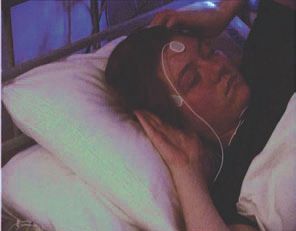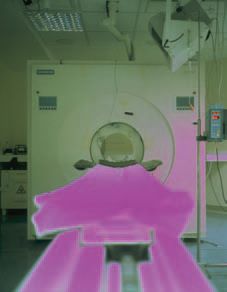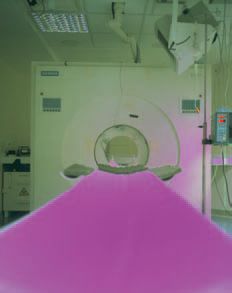
Physiology News Magazine
An unconventional marriage between physiology and art
A dual interpretation of the transition from sleep to wakefulness
Features
An unconventional marriage between physiology and art
A dual interpretation of the transition from sleep to wakefulness
Features
Felicity Astin (1), Mary Morrell (2), & Catherine Yass (3)
1: School of Healthcare Studies, University of Leeds, Leeds, UK
2: National Heart and Lung Institute, Imperial College of Science, Technology and Medicine, London, UK
3: Central Saint Martins College of Art and Design, London, UK
https://doi.org/10.36866/pn.59.37
To some, Science and Art would appear to be at opposite ends of the intellectual spectrum. Closer examination suggests that in many aspects these two disciplines are in fact inextricably linked. Both aim to explain or interpret particular phenomena of interest. Furthermore, both employ methodological frameworks that display as many similarities as differences. Science aims to answer questions using a systematic approach consisting of repeated observation. Similarly, artists must observe their subject over and over again to achieve their goal. The individual methods selected by both to achieve this, will have necessitated refinement over a significant period of time.
After the collection of observations in either a physical or intellectual sense, the next stage is one of interpretation. At this point the scientist or artist must ‘make sense’ of their observations. A scientist will become involved in a process of theory formulation or verification to describe the observed phenomena. An artist must find a way of putting their observations and interpretations into a visual language.
Both processes involve a considerable degree of creativity. In the case of the scientist this creativity may take the form of intuitive leaps that may deviate considerably from conventional theory. For the artist the language of interpretation must be relevant to the subject and be executed with expertise and originality. The product of such artistic enterprise is often striking and poignant, but to have value it must also in some way generate a meaning to the observer, thereby inducing a significant result. In scientific terms, both significant and non-significant findings have been used to explain or predict events. A quick glance at the history of science shows that the application of scientific discoveries has benefited the human race in myriad ways. Similarly, art has provided intellectual and emotional stimulation for many.




An interaction between art and science is one of the requirements for applicants submitting proposals to the Wellcome Trust for grants to support collaboration between science and art (Sci-Arts Projects). Mary Morrell (Senior Lecturer at Imperial College, London) and Catherine Yass (artist) were the recipients of Wellcome Trust funding in 2002 with a project, Waking Dream, that aimed to characterise the process of waking up from sleep and its impact upon the body and mind. Morrell adopted a physiological approach to quantify the process of waking from sleep, whilst Yass focused upon the subjects’ perceptions of this experience. The combination of scientific and artistic analysis was used to challenge the viewer to participate in an enquiry regarding the definition of arousal from sleep, and how the analytical approach selected can influence the answer to the questions posed.
From a scientific perspective, the transition from sleep to wakefulness is of interest because to date a comprehensive understanding of this process has eluded scientists. For example, the precise alignment of wakefulness, consciousness and cardiovascular function remains unclear. Arousal from sleep is particularly significant because of its impact upon the cardiovascular parameters; surges in heart rate and blood pressure can occur that far exceed physiological requirements. From a clinical perspective, such surges negatively influence prognosis in those individuals with chronic illnesses such as sleep apnoea, respiratory or cardiac disease. In a series of studies in healthy subjects, Morrell’s group have shown that the cardiovascular response to an arousal from sleep is not associated with changes in blood gases, upper airway reflexes, or the intensity of the arousal from sleep (O’Driscoll et al. 2004a; 2004b). These data support the suggestion that in healthy subjects the mechanism that produces the cardiovascular response is a fixed activation response, which is independent of respiratory stimuli (Horner et al. 1997; Horner, 2000). In patients with sleep apnoea, a homeostatic response to respiratory and possibly haemodynamic stimuli may be present at the time of arousal from sleep (Trinder et al. 2003). In this case the magnitude of the cardiovascular response would be related to either baroreflex activity, or a direct response to respiratory stimuli. Furthermore, there may be clinical implications to the switching of mechanisms. The fixed activation response will dampen the magnitude of the response at high levels of stimulation, protecting the individual from excessive cardiovascular activation during arousal from sleep. In contrast, homeostatic control allows substantial activation in response to high levels of stimulation. Work in this area is ongoing in Morrell’s laboratory.
From an artistic perspective Yass has had an ongoing interest in the role of the unconscious in shaping our perception of the waking, spatial environment. During the project Yass’s practice evolved and developed. Initially, she recorded a series of videos of healthy subjects experiencing the transition from rapid eye movement (REM) sleep to wakefulness. She was interested in exploring the cross-over between sleeping and waking, and asking whether there is a moment when the subject is both asleep and awake at the same time, where dreams mingle with reality. The reader is invited to look at the images in Fig. 1 and consider whether they can separate the moments when the subject was awake or asleep.
The second part of Waking Dream focused on patients with parasomnia; including patients who walked during sleep. This enquiry considered states that are usually associated with wakefulness, which occur during sleep and are motivated by hidden or unconscious drives. A single male subject who had sleep walked all of his life agreed, with ethical approval, to participate. His responses during sleep in his own home were visually recorded over a 2 week period using a miniature infra-red camera attached to his head. It was hoped that this approach would enable the observer to view the process of waking and walking from the subjects’ perspective rather than from a voyeuristic one.
Unfortunately, the nature of sleep is such that the camera was required to run for a considerable time, which meant that a large battery pack had to be worn by the participant. This disrupted the sleep pattern of the participant and it was decided not to continue with this part of the project.
The final part of the project involved Yass exploring images derived from her own dreams. Her interest lay in the limits of both artistic and scientific apparatuses to record experiences which have no physical manifestation. She chose to work with photography precisely because it is used in both art and science as a recording device, and to highlight the discrepancy between a medium associated with truth, and images which are illusions. Yass chose to reconstruct her dreams and ‘photograph’ them. Colours were manipulated by combining positives and negatives, and the prints were mounted onto light boxes, giving them an unreal, dreamlike quality. The photographs function as an archive of illusions, with no fixed meaning and open to any interpretation. (This may at first seem different from the way evidence is gathered and assessed in science, but in both practices the same material can be interpreted differently in different contexts and times.)


Some of the aforementioned images are to be incorporated into a display at the Royal Brompton Hospital in London, where they will be seen by patients attending the sleep laboratory and by hospital staff and scientists working within the National Heart and Lung Institute at Imperial College. In this way the collaborators will showcase the results of this innovative science – arts project. It is anticipated that the display will generate conversation into the methods of analysis used and the nature of the subject.
In conclusion, this unconventional marriage between art and physiology provided an opportunity for those involved to approach a single question using very different methodologies. They found as many similarities as differences in their approach, particularly in the way that information is gathered and interpreted. Without doubt Waking Dream broadened their horizons and practice in ways that could not have been anticipated at the start of the project.
Acknowledgements
This work was supported by a Wellcome Trust Science-Arts Grant.
References
Horner RL, Sanford LD, Pack AI & Morrison AR (1997). Activation of a distinct arousal state immediately after spontaneous awakening from sleep. Brain Res 778, 126-133.
Horner RL (2000). Physiological effects of sleep on the cardiovascular system. In Sleep Apnea: Implications in cardiovascular and cerebrovascular disease, ed. Bradley TD & Floras JS, pp 113-134. Marcel Dekker, New York.
O’Driscoll DM, Meadows GE, Corfield DR, Simonds AK & Morrell MJ (2004a). The cardiovascular response to arousal from sleep under controlled conditions of central and peripheral chemoreceptor stimulation in humans. J Appl Physiol 96, 865-870.
O’Driscoll DM, Meadows GE, Simonds AK, Corfield DR & Morrell MJ (2005). Occlusion of the upper airway does not augment the cardiovascular response to arousal from sleep in humans. J Appl Physiol 98, 1349-1355.
Trinder J, Allen N, Kleiman J, Kralevski V, Kleverlaan D, Anson K & Kim Y (2003). On the nature of cardiovascular activation at an arousal from sleep. Sleep 26, 543-551.
